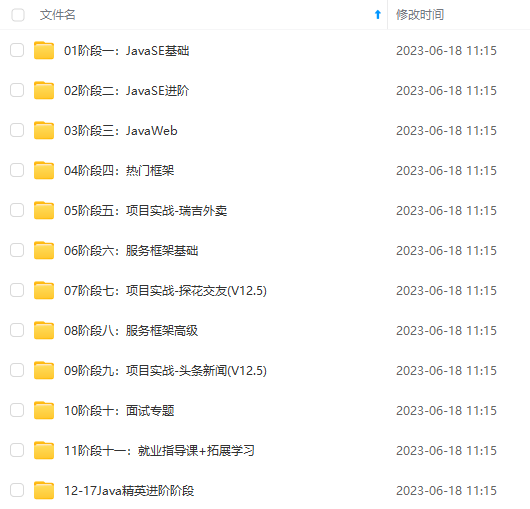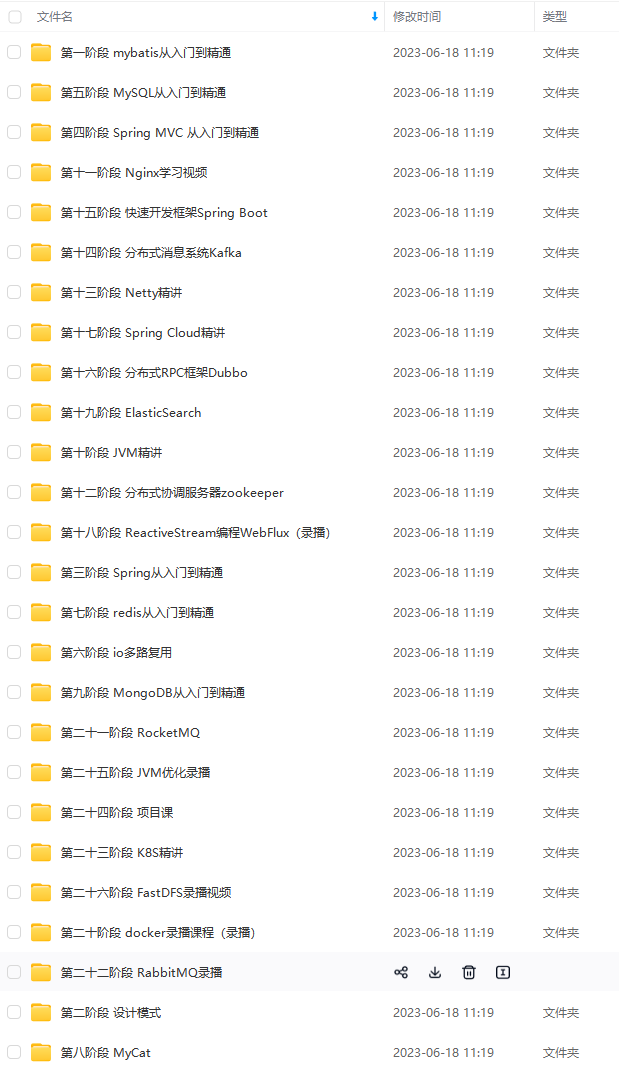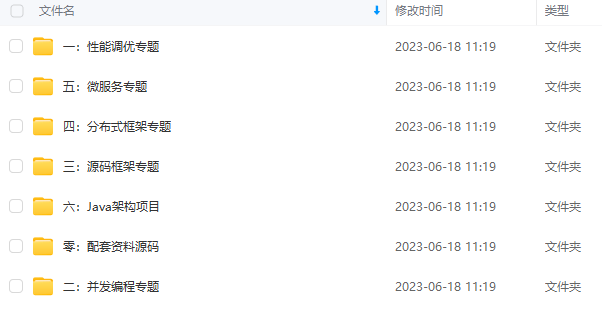timeBetweenEvictionRunsMillis: 60000 #配置间隔多久才进行一次检测,检测需要关闭的空闲连接,单位是毫秒
minEvictableIdleTimeMillis: 300000 #配置一个连接在池中最小生存的时间,单位是毫秒
validationQuery: SELECT 1 from DUAL #测试连接
testWhileIdle: true #申请连接的时候检测,建议配置为true,不影响性能,并且保证安全性
testOnBorrow: false #获取连接时执行检测,建议关闭,影响性能
testOnReturn: false #归还连接时执行检测,建议关闭,影响性能
poolPreparedStatements: false #是否开启PSCache,PSCache对支持游标的数据库性能提升巨大,oracle建议开启,mysql下建议关闭
maxPoolPreparedStatementPerConnectionSize: 20 #开启poolPreparedStatements后生效
filters: stat,wall,log4j #配置扩展插件,常用的插件有=>stat:监控统计 log4j:日志 wall:防御sql注入
connectionProperties: ‘druid.stat.mergeSql=true;druid.stat.slowSqlMillis=5000’ #通过connectProperties属性来打开mergeSql功能;慢SQL记录
eureka:
instance:
prefer-ip-address: true
instance-id: s p r i n g . c l o u d . c l i e n t . i p − a d d r e s s : {spring.cloud.client.ip-address}: spring.cloud.client.ip−address:{server.port}
client:
service-url:
defaultZone: http://localhost:1111/eureka/
mybatis:
type-aliases-package: com.curise.eshop.common.entity
configuration:
map-underscore-to-camel-case: true #开启驼峰命名,l_name -> lName
jdbc-type-for-null: NULL
lazy-loading-enabled: true
aggressive-lazy-loading: true
cache-enabled: true #开启二级缓存
call-setters-on-nulls: true #map空列不显示问题
mapper-locations:
- classpath:mybatis/*.xml
AuthApplication添加@EnableDiscoveryClient和@MapperScan注解。
接下来配置认证服务器AuthorizationServerConfig ,并添加@Configuration和@EnableAuthorizationServer注解,其中ClientDetailsServiceConfigurer配置在内存中,当然也可以从数据库读取,以后慢慢完善。
@Configuration
@EnableAuthorizationServer
public class AuthorizationServerConfig extends AuthorizationServerConfigurerAdapter {
@Autowired
private AuthenticationManager authenticationManager;
@Autowired
private DataSource dataSource;
@Autowired
private RedisConnectionFactory redisConnectionFactory;
@Autowired
private MyUserDetailService userDetailService;
@Bean
public TokenStore tokenStore() {
return new RedisTokenStore(redisConnectionFactory);
}
@Override
public void configure(AuthorizationServerSecurityConfigurer security) throws Exception {
security
.allowFormAuthenticationForClients()
.tokenKeyAccess(“permitAll()”)
.checkTokenAccess(“isAuthenticated()”);
}
@Override
public void configure(ClientDetailsServiceConfigurer clients) throws Exception {
// clients.withClientDetails(clientDetails());
clients.inMemory()
.withClient(“android”)
.scopes(“read”)
.secret(“android”)
.authorizedGrantTypes(“password”, “authorization_code”, “refresh_token”)
.and()
.withClient(“webapp”)
.scopes(“read”)
.authorizedGrantTypes(“implicit”)
.and()
.withClient(“browser”)
.authorizedGrantTypes(“refresh_token”, “password”)
.scopes(“read”);
}
@Bean
public ClientDetailsService clientDetails() {
return new JdbcClientDetailsService(dataSource);
}
@Bean
public WebResponseExceptionTranslator webResponseExceptionTranslator(){
return new MssWebResponseExceptionTranslator();
}
@Override
public void configure(AuthorizationServerEndpointsConfigurer endpoints) throws Exception {
endpoints.tokenStore(tokenStore())
.userDetailsService(userDetailService)
.authenticationManager(authenticationManager);
endpoints.tokenServices(defaultTokenServices());
//认证异常翻译
// endpoints.exceptionTranslator(webResponseExceptionTranslator());
}
/**
*
注意,自定义TokenServices的时候,需要设置@Primary,否则报错,
* @return
*/
@Primary
@Bean
public DefaultTokenServices defaultTokenServices(){
DefaultTokenServices tokenServices = new DefaultTokenServices();
tokenServices.setTokenStore(tokenStore());
tokenServices.setSupportRefreshToken(true);
//tokenServices.setClientDetailsService(clientDetails());
// token有效期自定义设置,默认12小时
tokenServices.setAccessTokenValiditySeconds(606012);
// refresh_token默认30天
tokenServices.setRefreshTokenValiditySeconds(60 * 60 * 24 * 7);
return tokenServices;
}
}
在上述配置中,认证的token是存到redis里的,如果你这里使用了Spring5.0以上的版本的话,使用默认的RedisTokenStore认证时会报如下异常:
nested exception is java.lang.NoSuchMethodError: org.springframework.data.redis.connection.RedisConnection.set([B[B)V
原因是spring-data-redis 2.0版本中set(String,String)被弃用了,要使用RedisConnection.stringCommands().set(…),所有我自定义一个RedisTokenStore,代码和RedisTokenStore一样,只是把所有conn.set(…)都换成conn…stringCommands().set(…),测试后方法可行。
public class RedisTokenStore implements TokenStore {
private static final String ACCESS = “access:”;
private static final String AUTH_TO_ACCESS = “auth_to_access:”;
private static final String AUTH = “auth:”;
private static final String REFRESH_AUTH = “refresh_auth:”;
private static final String ACCESS_TO_REFRESH = “access_to_refresh:”;
private static final String REFRESH = “refresh:”;
private static final String REFRESH_TO_ACCESS = “refresh_to_access:”;
private static final String CLIENT_ID_TO_ACCESS = “client_id_to_access:”;
private static final String UNAME_TO_ACCESS = “uname_to_access:”;
private final RedisConnectionFactory connectionFactory;
private AuthenticationKeyGenerator authenticationKeyGenerator = new DefaultAuthenticationKeyGenerator();
private RedisTokenStoreSerializationStrategy serializationStrategy = new JdkSerializationStrategy();
private String prefix = “”;
public RedisTokenStore(RedisConnectionFactory connectionFactory) {
this.connectionFactory = connectionFactory;
}
public void setAuthenticationKeyGenerator(AuthenticationKeyGenerator authenticationKeyGenerator) {
this.authenticationKeyGenerator = authenticationKeyGenerator;
}
public void setSerializationStrategy(RedisTokenStoreSerializationStrategy serializationStrategy) {
this.serializationStrategy = serializationStrategy;
}
public void setPrefix(String prefix) {
this.prefix = prefix;
}
private RedisConnection getConnection() {
return this.connectionFactory.getConnection();
}
private byte[] serialize(Object object) {
return this.serializationStrategy.serialize(object);
}
private byte[] serializeKey(String object) {
return this.serialize(this.prefix + object);
}
private OAuth2AccessToken deserializeAccessToken(byte[] bytes) {
return (OAuth2AccessToken)this.serializationStrategy.deserialize(bytes, OAuth2AccessToken.class);
}
private OAuth2Authentication deserializeAuthentication(byte[] bytes) {
return (OAuth2Authentication)this.serializationStrategy.deserialize(bytes, OAuth2Authentication.class);
}
private OAuth2RefreshToken deserializeRefreshToken(byte[] bytes) {
return (OAuth2RefreshToken)this.serializationStrategy.deserialize(bytes, OAuth2RefreshToken.class);
}
private byte[] serialize(String string) {
return this.serializationStrategy.serialize(string);
}
private String deserializeString(byte[] bytes) {
return this.serializationStrategy.deserializeString(bytes);
}
@Override
public OAuth2AccessToken getAccessToken(OAuth2Authentication authentication) {
String key = this.authenticationKeyGenerator.extractKey(authentication);
byte[] serializedKey = this.serializeKey(AUTH_TO_ACCESS + key);
byte[] bytes = null;
RedisConnection conn = this.getConnection();
try {
bytes = conn.get(serializedKey);
} finally {
conn.close();
}
OAuth2AccessToken accessToken = this.deserializeAccessToken(bytes);
if (accessToken != null) {
OAuth2Authentication storedAuthentication = this.readAuthentication(accessToken.getValue());
if (storedAuthentication == null || !key.equals(this.authenticationKeyGenerator.extractKey(storedAuthentication))) {
this.storeAccessToken(accessToken, authentication);
}
}
return accessToken;
}
@Override
public OAuth2Authentication readAuthentication(OAuth2AccessToken token) {
return this.readAuthentication(token.getValue());
}
@Override
public OAuth2Authentication readAuthentication(String token) {
byte[] bytes = null;
RedisConnection conn = this.getConnection();
try {
bytes = conn.get(this.serializeKey(“auth:” + token));
} finally {
conn.close();
}
OAuth2Authentication auth = this.deserializeAuthentication(bytes);
return auth;
}
@Override
public OAuth2Authentication readAuthenticationForRefreshToken(OAuth2RefreshToken token) {
return this.readAuthenticationForRefreshToken(token.getValue());
}
public OAuth2Authentication readAuthenticationForRefreshToken(String token) {
RedisConnection conn = getConnection();
try {
byte[] bytes = conn.get(serializeKey(REFRESH_AUTH + token));
OAuth2Authentication auth = deserializeAuthentication(bytes);
return auth;
} finally {
conn.close();
}
}
@Override
public void storeAccessToken(OAuth2AccessToken token, OAuth2Authentication authentication) {
byte[] serializedAccessToken = serialize(token);
byte[] serializedAuth = serialize(authentication);
byte[] accessKey = serializeKey(ACCESS + token.getValue());
byte[] authKey = serializeKey(AUTH + token.getValue());
byte[] authToAccessKey = serializeKey(AUTH_TO_ACCESS + authenticationKeyGenerator.extractKey(authentication));
byte[] approvalKey = serializeKey(UNAME_TO_ACCESS + getApprovalKey(authentication));
byte[] clientId = serializeKey(CLIENT_ID_TO_ACCESS + authentication.getOAuth2Request().getClientId());
RedisConnection conn = getConnection();
try {
conn.openPipeline();
conn.stringCommands().set(accessKey, serializedAccessToken);
conn.stringCommands().set(authKey, serializedAuth);
conn.stringCommands().set(authToAccessKey, serializedAccessToken);
if (!authentication.isClientOnly()) {
conn.rPush(approvalKey, serializedAccessToken);
}
conn.rPush(clientId, serializedAccessToken);
if (token.getExpiration() != null) {
int seconds = token.getExpiresIn();
conn.expire(accessKey, seconds);
conn.expire(authKey, seconds);
conn.expire(authToAccessKey, seconds);
conn.expire(clientId, seconds);
conn.expire(approvalKey, seconds);
}
OAuth2RefreshToken refreshToken = token.getRefreshToken();
if (refreshToken != null && refreshToken.getValue() != null) {
byte[] refresh = serialize(token.getRefreshToken().getValue());
byte[] auth = serialize(token.getValue());
byte[] refreshToAccessKey = serializeKey(REFRESH_TO_ACCESS + token.getRefreshToken().getValue());
conn.stringCommands().set(refreshToAccessKey, auth);
byte[] accessToRefreshKey = serializeKey(ACCESS_TO_REFRESH + token.getValue());
conn.stringCommands().set(accessToRefreshKey, refresh);
if (refreshToken instanceof ExpiringOAuth2RefreshToken) {
ExpiringOAuth2RefreshToken expiringRefreshToken = (ExpiringOAuth2RefreshToken) refreshToken;
Date expiration = expiringRefreshToken.getExpiration();
if (expiration != null) {
int seconds = Long.valueOf((expiration.getTime() - System.currentTimeMillis()) / 1000L)
.intValue();
conn.expire(refreshToAccessKey, seconds);
conn.expire(accessToRefreshKey, seconds);
}
}
}
conn.closePipeline();
} finally {
conn.close();
}
}
private static String getApprovalKey(OAuth2Authentication authentication) {
String userName = authentication.getUserAuthentication() == null ? “”: authentication.getUserAuthentication().getName();
return getApprovalKey(authentication.getOAuth2Request().getClientId(), userName);
}
private static String getApprovalKey(String clientId, String userName) {
return clientId + (userName == null ? “” : “:” + userName);
}
@Override
public void removeAccessToken(OAuth2AccessToken accessToken) {
this.removeAccessToken(accessToken.getValue());
}
@Override
public OAuth2AccessToken readAccessToken(String tokenValue) {
byte[] key = serializeKey(ACCESS + tokenValue);
byte[] bytes = null;
RedisConnection conn = getConnection();
try {
bytes = conn.get(key);
} finally {
conn.close();
}
OAuth2AccessToken accessToken = deserializeAccessToken(bytes);
return accessToken;
}
public void removeAccessToken(String tokenValue) {
byte[] accessKey = serializeKey(ACCESS + tokenValue);
byte[] authKey = serializeKey(AUTH + tokenValue);
byte[] accessToRefreshKey = serializeKey(ACCESS_TO_REFRESH + tokenValue);
RedisConnection conn = getConnection();
try {
conn.openPipeline();
conn.get(accessKey);
conn.get(authKey);
conn.del(accessKey);
conn.del(accessToRefreshKey);
// Don’t remove the refresh token - it’s up to the caller to do that
conn.del(authKey);
List results = conn.closePipeline();
byte[] access = (byte[]) results.get(0);
byte[] auth = (byte[]) results.get(1);
OAuth2Authentication authentication = deserializeAuthentication(auth);
if (authentication != null) {
String key = authenticationKeyGenerator.extractKey(authentication);
byte[] authToAccessKey = serializeKey(AUTH_TO_ACCESS + key);
byte[] unameKey = serializeKey(UNAME_TO_ACCESS + getApprovalKey(authentication));
byte[] clientId = serializeKey(CLIENT_ID_TO_ACCESS + authentication.getOAuth2Request().getClientId());
conn.openPipeline();
conn.del(authToAccessKey);
conn.lRem(unameKey, 1, access);
conn.lRem(clientId, 1, access);
conn.del(serialize(ACCESS + key));
conn.closePipeline();
}
} finally {
conn.close();
}
}
@Override
public void storeRefreshToken(OAuth2RefreshToken refreshToken, OAuth2Authentication authentication) {
byte[] refreshKey = serializeKey(REFRESH + refreshToken.getValue());
byte[] refreshAuthKey = serializeKey(REFRESH_AUTH + refreshToken.getValue());
byte[] serializedRefreshToken = serialize(refreshToken);
RedisConnection conn = getConnection();
try {
conn.openPipeline();
conn.stringCommands().set(refreshKey, serializedRefreshToken);
conn.stringCommands().set(refreshAuthKey, serialize(authentication));
if (refreshToken instanceof ExpiringOAuth2RefreshToken) {
ExpiringOAuth2RefreshToken expiringRefreshToken = (ExpiringOAuth2RefreshToken) refreshToken;
Date expiration = expiringRefreshToken.getExpiration();
if (expiration != null) {
int seconds = Long.valueOf((expiration.getTime() - System.currentTimeMillis()) / 1000L)
.intValue();
conn.expire(refreshKey, seconds);
conn.expire(refreshAuthKey, seconds);
}
}
conn.closePipeline();
} finally {
conn.close();
}
}
@Override
public OAuth2RefreshToken readRefreshToken(String tokenValue) {
byte[] key = serializeKey(REFRESH + tokenValue);
byte[] bytes = null;
RedisConnection conn = getConnection();
try {
bytes = conn.get(key);
} finally {
conn.close();
}
OAuth2RefreshToken refreshToken = deserializeRefreshToken(bytes);
return refreshToken;
}
@Override
public void removeRefreshToken(OAuth2RefreshToken refreshToken) {
this.removeRefreshToken(refreshToken.getValue());
}
public void removeRefreshToken(String tokenValue) {
byte[] refreshKey = serializeKey(REFRESH + tokenValue);
byte[] refreshAuthKey = serializeKey(REFRESH_AUTH + tokenValue);
byte[] refresh2AccessKey = serializeKey(REFRESH_TO_ACCESS + tokenValue);
byte[] access2RefreshKey = serializeKey(ACCESS_TO_REFRESH + tokenValue);
RedisConnection conn = getConnection();
try {
conn.openPipeline();
conn.del(refreshKey);
conn.del(refreshAuthKey);
conn.del(refresh2AccessKey);
conn.del(access2RefreshKey);
conn.closePipeline();
} finally {
conn.close();
}
}
@Override
public void removeAccessTokenUsingRefreshToken(OAuth2RefreshToken refreshToken) {
this.removeAccessTokenUsingRefreshToken(refreshToken.getValue());
}
private void removeAccessTokenUsingRefreshToken(String refreshToken) {
byte[] key = serializeKey(REFRESH_TO_ACCESS + refreshToken);
List results = null;
RedisConnection conn = getConnection();
try {
conn.openPipeline();
conn.get(key);
conn.del(key);
results = conn.closePipeline();
} finally {
conn.close();
}
if (results == null) {
return;
}
byte[] bytes = (byte[]) results.get(0);
String accessToken = deserializeString(bytes);
if (accessToken != null) {
removeAccessToken(accessToken);
}
}
@Override
public Collection findTokensByClientIdAndUserName(String clientId, String userName) {
byte[] approvalKey = serializeKey(UNAME_TO_ACCESS + getApprovalKey(clientId, userName));
List<byte[]> byteList = null;
RedisConnection conn = getConnection();
try {
byteList = conn.lRange(approvalKey, 0, -1);
} finally {
conn.close();
}
if (byteList == null || byteList.size() == 0) {
return Collections. emptySet();
}
List accessTokens = new ArrayList(byteList.size());
for (byte[] bytes : byteList) {
OAuth2AccessToken accessToken = deserializeAccessToken(bytes);
accessTokens.add(accessToken);
}
return Collections. unmodifiableCollection(accessTokens);
}
@Override
public Collection findTokensByClientId(String clientId) {
byte[] key = serializeKey(CLIENT_ID_TO_ACCESS + clientId);
List<byte[]> byteList = null;
RedisConnection conn = getConnection();
try {
byteList = conn.lRange(key, 0, -1);
} finally {
conn.close();
}
if (byteList == null || byteList.size() == 0) {
return Collections. emptySet();
}
List accessTokens = new ArrayList(byteList.size());
for (byte[] bytes : byteList) {
OAuth2AccessToken accessToken = deserializeAccessToken(bytes);
accessTokens.add(accessToken);
}
return Collections. unmodifiableCollection(accessTokens);
}
}
配置资源服务器
@Configuration
@EnableResourceServer
@Order(3)
public class ResourceServerConfig extends ResourceServerConfigurerAdapter {
@Override
public void configure(HttpSecurity http) throws Exception {
http
.csrf().disable()
.exceptionHandling()
.authenticationEntryPoint((request, response, authException) -> response.sendError(HttpServletResponse.SC_UNAUTHORIZED))
.and()
.requestMatchers().antMatchers(“/api/**”)
.and()
.authorizeRequests()
.antMatchers(“/api/**”).authenticated()
.and()
.httpBasic();
}
}
配置Spring Security
@Configuration
@EnableWebSecurity
@Order(2)
public class SecurityConfig extends WebSecurityConfigurerAdapter {
@Autowired
private MyUserDetailService userDetailService;
@Bean
public PasswordEncoder passwordEncoder() {
//return new BCryptPasswordEncoder();
return new NoEncryptPasswordEncoder();
}
@Override
protected void configure(HttpSecurity http) throws Exception {
http.requestMatchers().antMatchers(“/oauth/**”)
.and()
.authorizeRequests()
.antMatchers(“/oauth/**”).authenticated()
.and()
.csrf().disable();
}
@Override
protected void configure(AuthenticationManagerBuilder auth) throws Exception {
auth.userDetailsService(userDetailService).passwordEncoder(passwordEncoder());
}
/**
* 不定义没有password grant_type
* @return
* @throws Exception
*/
@Override
@Bean
public AuthenticationManager authenticationManagerBean() throws Exception {
return super.authenticationManagerBean();
}
}
可以看到ResourceServerConfig 是比SecurityConfig 的优先级低的。
二者的关系:
-
ResourceServerConfig 用于保护oauth相关的endpoints,同时主要作用于用户的登录(form login,Basic auth)
-
SecurityConfig 用于保护oauth要开放的资源,同时主要作用于client端以及token的认证(Bearer auth)
所以我们让SecurityConfig优先于ResourceServerConfig,且在SecurityConfig 不拦截oauth要开放的资源,在ResourceServerConfig 中配置需要token验证的资源,也就是我们对外提供的接口。所以这里对于所有微服务的接口定义有一个要求,就是全部以/api开头。
如果这里不这样配置的话,在你拿到access_token去请求各个接口时会报 invalid_token的提示。
另外,由于我们自定义认证逻辑,所以需要重写UserDetailService
@Service(“userDetailService”)
public class MyUserDetailService implements UserDetailsService {
@Autowired
private MemberDao memberDao;
@Override
public UserDetails loadUserByUsername(String memberName) throws UsernameNotFoundException {
Member member = memberDao.findByMemberName(memberName);
if (member == null) {
throw new UsernameNotFoundException(memberName);
}
Set grantedAuthorities = new HashSet<>();
// 可用性 :true:可用 false:不可用
boolean enabled = true;
// 过期性 :true:没过期 false:过期
boolean accountNonExpired = true;
// 有效性 :true:凭证有效 false:凭证无效
boolean credentialsNonExpired = true;
// 锁定性 :true:未锁定 false:已锁定
boolean accountNonLocked = true;
for (Role role : member.getRoles()) {
//角色必须是ROLE_开头,可以在数据库中设置
GrantedAuthority grantedAuthority = new SimpleGrantedAuthority(role.getRoleName());
grantedAuthorities.add(grantedAuthority);
//获取权限
for (Permission permission : role.getPermissions()) {
GrantedAuthority authority = new SimpleGrantedAuthority(permission.getUri());
grantedAuthorities.add(authority);
}
}
User user = new User(member.getMemberName(), member.getPassword(),
enabled, accountNonExpired, credentialsNonExpired, accountNonLocked, grantedAuthorities);
return user;
}
}
密码验证为了方便我使用了不加密的方式,重写了PasswordEncoder,实际开发还是建议使用BCryptPasswordEncoder。
public class NoEncryptPasswordEncoder implements PasswordEncoder {
@Override
public String encode(CharSequence charSequence) {
return (String) charSequence;
}
@Override
public boolean matches(CharSequence charSequence, String s) {
return s.equals((String) charSequence);
}
}
另外,OAuth的密码模式需要AuthenticationManager支持
@Override
@Bean
public AuthenticationManager authenticationManagerBean() throws Exception {
return super.authenticationManagerBean();
}
定义一个Controller,提供两个接口,/api/member用来获取当前用户信息,/api/exit用来注销当前用户
@RestController
@RequestMapping(“/api”)
public class MemberController {
@Autowired
private MyUserDetailService userDetailService;
@Autowired
private ConsumerTokenServices consumerTokenServices;
@GetMapping(“/member”)
public Principal user(Principal member) {
return member;
}
@DeleteMapping(value = “/exit”)
public Result revokeToken(String access_token) {
Result result = new Result();
if (consumerTokenServices.revokeToken(access_token)) {
result.setCode(ResultCode.SUCCESS.getCode());
result.setMessage(“注销成功”);
} else {
result.setCode(ResultCode.FAILED.getCode());
result.setMessage(“注销失败”);
}
return result;
}
}
会员服务配置
引入依赖
<?xml version="1.0" encoding="UTF-8"?><project xmlns=“http://maven.apache.org/POM/4.0.0”
xmlns:xsi=“http://www.w3.org/2001/XMLSchema-instance”
xsi:schemaLocation=“http://maven.apache.org/POM/4.0.0 http://maven.apache.org/xsd/maven-4.0.0.xsd”>
eshop-parent
com.curise.eshop
1.0-SNAPSHOT
4.0.0
eshop-member
war
会员模块
org.springframework.boot
spring-boot-starter-web
org.springframework.boot
spring-boot-starter-test
test
org.springframework.cloud
spring-cloud-starter-netflix-eureka-client
org.springframework.cloud
spring-cloud-starter-oauth2
org.springframework.cloud
spring-cloud-starter-security
com.alibaba
fastjson
org.springframework.boot
spring-boot-maven-plugin
配置资源服务器
@Configuration
@EnableResourceServer
public class ResourceServerConfig extends ResourceServerConfigurerAdapter {
@Override
public void configure(HttpSecurity http) throws Exception {
http
.csrf().disable()
.exceptionHandling()
.authenticationEntryPoint((request, response, authException) -> response.sendError(HttpServletResponse.SC_UNAUTHORIZED))
.and()
.requestMatchers().antMatchers(“/api/**”)
.and()
.authorizeRequests()
.antMatchers(“/api/**”).authenticated()
.and()
.httpBasic();
}
}
配置文件配置
spring:
application:
name: eshop-member
server:
port: 1201
eureka:
instance:
prefer-ip-address: true
instance-id: s p r i n g . c l o u d . c l i e n t . i p − a d d r e s s : {spring.cloud.client.ip-address}: spring.cloud.client.ip−address:{server.port}
client:
service-url:
defaultZone: http://localhost:1111/eureka/
security:
oauth2:
resource:
id: eshop-member
user-info-uri: http://localhost:1202/auth/api/member
prefer-token-info: false
MemberApplication主类配置
@SpringBootApplication
@EnableDiscoveryClient
@EnableGlobalMethodSecurity(prePostEnabled = true)
public class MemberApplication {
public static void main(String[] args) {
SpringApplication.run(MemberApplication.class,args);
}
}
提供对外接口
@RestController
@RequestMapping(“/api”)
public class MemberController {
@GetMapping(“hello”)
@PreAuthorize(“hasAnyAuthority(‘hello’)”)
public String hello(){
return “hello”;
}
@GetMapping(“current”)
public Principal user(Principal principal) {
return principal;
}
@GetMapping(“query”)
@PreAuthorize(“hasAnyAuthority(‘query’)”)
public String query() {
return “具有query权限”;
}
}
配置网关
引入依赖
<?xml version="1.0" encoding="UTF-8"?><project xmlns=“http://maven.apache.org/POM/4.0.0”
xmlns:xsi=“http://www.w3.org/2001/XMLSchema-instance”
xsi:schemaLocation=“http://maven.apache.org/POM/4.0.0 http://maven.apache.org/xsd/maven-4.0.0.xsd”>
eshop-parent
com.curise.eshop
1.0-SNAPSHOT
4.0.0
jar
eshop-gateway
网关
org.springframework.boot
spring-boot-starter-web
org.springframework.cloud
spring-cloud-starter-netflix-eureka-client
org.springframework.cloud
spring-cloud-starter-netflix-zuul
org.springframework.cloud
spring-cloud-starter-oauth2
org.springframework.cloud
spring-cloud-starter-security
org.springframework.boot
spring-boot-starter-actuator
org.springframework.boot
spring-boot-maven-plugin
配置文件
server:
port: 1202
最后
自我介绍一下,小编13年上海交大毕业,曾经在小公司待过,也去过华为、OPPO等大厂,18年进入阿里一直到现在。
深知大多数Java工程师,想要提升技能,往往是自己摸索成长,自己不成体系的自学效果低效漫长且无助。
因此收集整理了一份《2024年Java开发全套学习资料》,初衷也很简单,就是希望能够帮助到想自学提升又不知道该从何学起的朋友,同时减轻大家的负担。



既有适合小白学习的零基础资料,也有适合3年以上经验的小伙伴深入学习提升的进阶课程,基本涵盖了95%以上Java开发知识点,不论你是刚入门Android开发的新手,还是希望在技术上不断提升的资深开发者,这些资料都将为你打开新的学习之门!
如果你觉得这些内容对你有帮助,需要这份全套学习资料的朋友可以戳我获取!!
由于文件比较大,这里只是将部分目录截图出来,每个节点里面都包含大厂面经、学习笔记、源码讲义、实战项目、讲解视频,并且会持续更新!
g>jar
eshop-gateway
网关
org.springframework.boot
spring-boot-starter-web
org.springframework.cloud
spring-cloud-starter-netflix-eureka-client
org.springframework.cloud
spring-cloud-starter-netflix-zuul
org.springframework.cloud
spring-cloud-starter-oauth2
org.springframework.cloud
spring-cloud-starter-security
org.springframework.boot
spring-boot-starter-actuator
org.springframework.boot
spring-boot-maven-plugin
配置文件
server:
port: 1202
最后
自我介绍一下,小编13年上海交大毕业,曾经在小公司待过,也去过华为、OPPO等大厂,18年进入阿里一直到现在。
深知大多数Java工程师,想要提升技能,往往是自己摸索成长,自己不成体系的自学效果低效漫长且无助。
因此收集整理了一份《2024年Java开发全套学习资料》,初衷也很简单,就是希望能够帮助到想自学提升又不知道该从何学起的朋友,同时减轻大家的负担。
[外链图片转存中…(img-8hZxUahO-1715079892601)]
[外链图片转存中…(img-ZvsBxBG8-1715079892602)]
[外链图片转存中…(img-BeLz6HRw-1715079892602)]
既有适合小白学习的零基础资料,也有适合3年以上经验的小伙伴深入学习提升的进阶课程,基本涵盖了95%以上Java开发知识点,不论你是刚入门Android开发的新手,还是希望在技术上不断提升的资深开发者,这些资料都将为你打开新的学习之门!
如果你觉得这些内容对你有帮助,需要这份全套学习资料的朋友可以戳我获取!!
由于文件比较大,这里只是将部分目录截图出来,每个节点里面都包含大厂面经、学习笔记、源码讲义、实战项目、讲解视频,并且会持续更新!






















 685
685











 被折叠的 条评论
为什么被折叠?
被折叠的 条评论
为什么被折叠?








